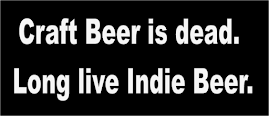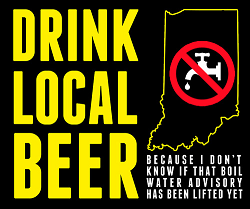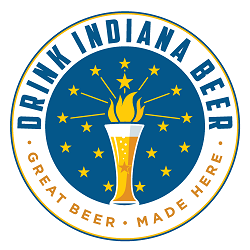The biking beer hunters – Kevin Richards, Bob Reed, Buddy Sandbach and Roger Baylor – managed to survive the onslaught of the Danish invaders on the final evening in Tournai. Poperinge was next in line as host for three days of biking in Flanders, and with it the belated presence of the Fifth Musketeer, Kevin Lowber,
5. Belgian beercycling 2000: An evening at Cave a Biere, Danes included.
4. Belgian beercycling 2000: Brewing day with Jean-Louis at Brasserie A Vapeur.
3. Belgian beercycling 2000: Tournai warm-up, Cave a Bieres and Pays du Collines.
2. Belgian beercycling 2000: From Brussels to the Tournai base camp in less than 15 drinks.
1. Belgian beercycling 2000: A prologue.----
“The (German) attack had not penetrated to the decisive heights of Cassel and the Mont des Cats, the possession of which would have compelled the (British) evacuation of the Ypres salient and the Yser position. No great strategic movement had become possible, and the Channel ports had not been reached. The second great offensive had not brought about the hoped-for decision.”--From the official German account of the offensives on the Western Front in 1918, as quoted by John Keegan in his book, “The First World War.”
----
When the fatigued quartet arrived by train on Sunday lunchtime in the Belgian “hop town” of Poperinge, a place that had the good fortune to remain somewhat safely behind British lines throughout the Great War and accordingly was spared the wholesale devastation suffered only ten kilometers away in Ieper (Ypres), the street called Ieperstraat that leads from the tiny train station to the center of town was packed with shoppers, strollers and snackers. The festive atmosphere was a complete surprise, as most stores and shops aren’t open on Sunday, but we later learned that it was a special annual shopping day, precisely the sort of phenomenon to make a beercyclist thirsty as he waits for the next spoked fix.
Checking into the legendary Hotel/Restaurant Palace, we found our newly arrived comrade Kevin Lowber carving a massive slab of beef, anxiously awaiting us in the shadow of an equally oversized bottle of red wine. He’d just come in to Poperinge from Brussels. Biking in and around the town was slated to begin on Monday, and this seemed to merit a map study and strategy and tactics session. Adjourning across the hall to the hotel’s cozy world-class beer bar, we discussed the riding itinerary for the coming days.
A plan of attack quickly fell into place. Monday would take us to Ieper for a ride through the battlefield sites south and east of town. On Tuesday, we would meet Luc Dequidt, chief of Poperinge’s amazingly comprehensive tourist bureau, for a two-wheeled tour of local attractions: The St. Sixtus abbey (home of the scrumptious Westvletern Trappist ales), the brewing town of Watou, the Helleketel forest, and row after row of the hop trellises that take on a life of their own each three years during the town’s hop festival.
Wednesday was chosen as the day for us to attempt what German military might had failed to achieve more than eight decades before: Seize the heights of Mont des Cats and Cassel. From our Poperinge base, this projected foray into France wouldn’t be very difficult, totaling less than 30 miles roundtrip; more importantly, it would provide a glimpse of northern French beer culture, which naturally was my ulterior motive all along.
Riding east towards Ieper on Monday, the French hills almost always could be seen rising on the horizon to the south, and although they aren’t particularly big, the flatness of Flanders magnifies their significance and one can readily understand their strategic importance in wartime. There were constant reminders of combat on Monday, as our journey took us past numerous Great War monuments and cemeteries of the British Commonwealth forces, whose final resting places attested to the global scale of the First World War: Irish, Australian, Canadian and Indian soldiers, buried alongside lads from Manchester and Newcastle. The resting places of Belgian, French and German soldiers also were seen.
Monday’s midday break brought us to the center of Ieper, a town utterly devastated from 1914-1918, then painstakingly rebuilt in the years preceding the next world conflagration. When the second war swept through Belgium, one young Ieper native resolved to escape. He made it somehow to then-colony of Belgian Congo, and later to South Africa, where he enlisted in the British armed forces and fought against the German occupiers until war’s end in 1945. Later he founded a restaurant and pub, sold it, then opened another, called Ter Posterie for its location opposite Ieper’s post office.
I can’t remember this man’s name, and certainly he would have no reason to remember mine, but nonetheless I met him on three different occasions and have always enjoyed the beer, food and hospitality at Ter Posterie. By 2000, active control of the business had long since passed to his daughter, but the old man still frequented the establishment, and when glimpsing an English speaker, would spin his life story for the visitor in a narrative honed over thousands of ale-side retellings. Ter Posterie is another Belgian classic, with many dozens of bottled ales, a few more on draft, savory food and an outdoor terrace, where we sat and discussed our first half-day’s ride.*
Tuesday’s riding schedule was light, but rich in intangibles owing to the presence of Luc and his wife, Jeannine. We kept a leisurely pace on the country lanes radiating from Poperinge, never very far from the smell of manure and the sight of hops. It was a pub crawl on human-powered wheels: Westvleteren 12-degree Trappist at the terrace of the newly built tasting café opposite the abbey, then through the woods and fields to the fabled “brewing village” of Watou and refreshing Witbier from the small town’s Van Eecke brewery, then south and east via wooded lanes back to Poperinge.
At the edge of the Helleketel forest there is a small brewery and tasting café known as the Bie**; unfortunately, it wasn’t open on Tuesday. Amazingly, yet another brewery is located near Watou, which is really no more than a collection of houses: St. Bernardus, which used to produce beer by contract for the monks of St. Sixtus under the Sixtus name. The contract was terminated, and the brewery began to brew its own line of abbey-style ales that arguably is the finest of all secular recreations.
Wednesday proved to be the highlight of the Poperinge interlude, with the group primed for climbing the two French hills and having lunch in Cassell. Arriving winded at the summit of the Mont des Cats, we saw a conveniently situated Trappist monastery, which might have provided liquid incentive had it been situated a few miles north in Belgium. Unfortunately, there are no Trappist breweries in France, so instead the monastery makes acclaimed cheeses and butter, some of which were destined for sampling later at our midday feast.
For beer, one must descend the Mont des Cats and proceed to the small town of St. Sylvestre Cappell, home to the brewery that produces Trois Monts, or “three mountains.” Wherever the third one is located, we did not climb it. Trois Monts is exemplary proof that good beer and France are not mutually exclusive, although this view continues to be held by many otherwise intelligent and discerning beer aficionados, whose Francophobia is permitted to hold sway at the expense of their taste buds.
They’re missing good things. Bieres de garde perhaps are best understood as a sort of appellation of origin, describing beers from northern France, but beyond that there are few hard and fast rules. Often they are made with top-fermenting yeast, but not always. Usually they are aged in a process akin to lagering. Colors and strengths range across the spectrum. Many, but not all, are bottled in 750 ml corked bottles. If there is any one characteristic that seems common among the better French bieres de garde, it is a richly complex malt character. These are beers that taste fine alone, but better when they accompany food.
Thus, having scaled the heights of the Mont des Cats and scrambled down the other side in pursuit of a restorative glass of Trois Monts, we found it in a tiny roadside café where the proprietor spoke no English but was happy to learn that we weren’t “English”, and who seemed amused by our interest in the local brew. Temporarily sated, our final and more formidable objective lay before us: Cassel, the town straddling the top of the hill of the same name.
A half-hour’s ride along the highway brought us to the foot of the hill, and we began the winding ascent that culminated in the town’s main square. A narrow lane took us further toward the top, ending in a wooded park with a large windmill situated to our left. I knew from previous research that this was the Grail, for located just beneath the windmill was our real reason for coming: T' Kasteel Hoff.
The windmill is the highest point in Flanders, with unobstructed views far and wide even on a hazy day, and the café just below it, one that clings to the side of the steep hill, is considered the finest beer café in France. I’ve been to few others, but it would be difficult to imagine any better.
T’ Kasteel Hoff specializes in all things local. The food is from French Flanders, as are the beers. We found seats on the patio after walking through the crowded main room, where spontaneous applause greeted our entrance; bowing in appreciation of this unexpected acknowledgement of our collective biking prowess, we were disappointed to learn that the group of senior citizens actually was applauding a speech of some sort by one of its own.
Instructed that the kitchen was being overloaded by the tour group and only cold food was available, each of us opted for a mixed cheese and pate plate. Three would have sufficed for all five beercyclists, such was the size of the portions. Three 750 ml bottles of French Bieres de Garde were shared: Hommelpap (four hop varieties, earthy and a moderate 7% abv), Kasteel (the house ale) and Pot Flamand, the latter two falling on the sweetly malty side of the flavor spectrum, as I expected.
As if a convivial atmosphere, bountiful food and delicious beer weren’t reason enough to seek out t’ Kasteel Hoff, the pub also boasts a shop for carry-out sales: Bieres de garde, local honey and jam, liqueurs, post cards and souvenirs -- more of each than any of us were able to carry, and Kevin Lowber drew the short straw in this regard: He had made the mistake of bringing his backpack, which was filled with booty gathered by the others, our rental bikes being unequipped with panniers or hauling apparatus.
With ground to cover back to Poperinge and expressing ample regrets over having to leave so soon, we lugged our booty to the bikes and debarked in a meandering northerly direction, enjoying the countryside and melting away the lunchtime caloric intake. The group seemed hale and hearty, except perhaps Buddy, and therein is yet another story.
On the night preceding our Cassell reconnoitering, after benedictory drinks with Luc, we’d dined as a group in the Hotel Palace’s restaurant and enjoyed several bottles of French red wine with the uniformly excellent meats, breads and pastas. After dinner, adjourning once again to the nearby bar and seeking the inimitable service provided by Guy, the owner, Kevin Richards elected to continue drinking wine. For reasons that remain obscure to this very day, Buddy felt emboldened to undertake a suicide mission, attempting to match Kevin bottle for bottle.
Knowing better from previous experiences, the remainder of the contingent nursed Belgian ales and retired to bed early in preparation for the big day. For those readers who have witnessed such ill-conceived ventures in the past, it should come as no surprise that during our ascent of the two French hills, Buddy began to perceive the error of his ways, particularly during lunch, when he was overheard to remark that a nap would feel good. On the ride back to Poperinge, he was flagging. For a while, it seemed that Bob might have to offer last rites, but he rallied and finished the course. Back at the Hotel Palace, bikes safely returned to the shop, and with appetites stoked by the day’s activities, Buddy went straight to bed.
For the rest of us, a meal on the main square at Café Paix and a few ales during the evening’s televised Euro Cup soccer match capped off a long and fruitful day. Not for the first time, I asked myself why it had taken me so long to discover the joys of biking in Europe.
As a reminder, once every three years (next in 2008), Poperinge celebrates its heritage of hops with a festival that captures the attention of beer lovers throughout the world, but remains consummately local in orientation, with much of the town actively participating in the fun. The town welcomes visitors at all times, not only during the festival, and it is hard to overstate the many charms of the area, especially for those infatuated with Belgian beer. Poperinge is eternally friendly, relaxed, tidy and efficient. As has happened so many times since, it was with grudging reluctance that my friends and I group departed on Thursday morning, walking back up Ieperstraat to board the train to Brugge and travel to the final phase of a remarkable trip.
----
* During the course of several visits subsequent to the 2000 trip recounted here, Ter Posterie’s colorful founder was observed to be sadly descending into advanced Alzheimer’s disease, and I believe he has now passed away. He will be remembered.
** In 2007, the Bie’s rural tasting room remains intact, and the company has a few other outposts in the region, but the brewing now is done a few miles away in Loker.
 The conclusion of the 2000 beercycling series will come this weekend. Meanwhile, there are wild Belgian ales to taste. Here is the .pdf of this year's program.
The conclusion of the 2000 beercycling series will come this weekend. Meanwhile, there are wild Belgian ales to taste. Here is the .pdf of this year's program.

 Yesterday both Jared Williamson (above) and the author accompanied Jesse northward with the exact same quantity of NABC beer, which this year was Elsa Von Horizon, Hoptimus and Thunderfoot, which clock in at elevated abv’s of 8, 9 and 11, respectively.
Yesterday both Jared Williamson (above) and the author accompanied Jesse northward with the exact same quantity of NABC beer, which this year was Elsa Von Horizon, Hoptimus and Thunderfoot, which clock in at elevated abv’s of 8, 9 and 11, respectively.
 The small street that is devoted to Brew-Ha-Ha was solidly choked with humanity by the time our last keg popped, so we tore down and drove further north to enjoy relaxed pints and snacks, first at the Broad Ripple Brewing Company and then at Brugs Brasserie. The NABC brew crew was on the road for New Albany by the time Brew-Ha-Ha “officially” ended at 7:00 p.m.
The small street that is devoted to Brew-Ha-Ha was solidly choked with humanity by the time our last keg popped, so we tore down and drove further north to enjoy relaxed pints and snacks, first at the Broad Ripple Brewing Company and then at Brugs Brasserie. The NABC brew crew was on the road for New Albany by the time Brew-Ha-Ha “officially” ended at 7:00 p.m. For more photos, see
For more photos, see 







